SAD Light therapy: Brighten up your winter
filter
Seasonal affective disorder (SAD) is a seasonal condition where people experience low moods at the onset of fall or winter, followed by improved mood at the start of spring or summer. A novel treatment for SAD is bright light. The National Health Service (NHS) and the American Psychiatric Association (APA) have recommended it based on the light therapy benefits for SAD [1][2]
What is SAD light therapy?
The concept is simple- you sit in front of a light box for a specified time and soon you will find yourself in a better mood. A SAD light box is a source of light in the form of a portable lamp that provides a specific wavelength of light that is effective for SAD symptoms. Light boxes or SAD lamps are non-prescription and economical. These light boxes come in different intensity of illuminance, which is measured in units called lux. Daylight on a winter day would be around 2000 lux. This is higher than a brightly lit room of 500 lux. Direct sunlight is 10,000 lux, which is the recommended dose in light therapy [3]. The following is a recommended plan [4]:
- Light source:
- Fluorescent light box with diffusion screen
- Set up:
- Kept 12-24 inches (30-60 cms) from user
- Angled at 30 degrees (to avoid directly staring at the light)
- Dose and time:
- Morning exposure is recommended
- 10,000 lux for 30 minutes / 2,500 lux for 1-2 hours
- Duration:
- Every morning for 4 weeks [5]
- Start in autumn and continue till spring
Light therapy is safe and free of food/medication contraindications. Mild side effects faced by few users include headaches and eye strain. It is safer for those with eye conditions to avoid light therapy [6].
Do SAD lamps work?
In places like Sweden that have consistently low daylight days, there are light therapy cafes where customers can spend time soaking up bright light to help alleviate SAD symptoms. Moodlight café has brought this Scandinavian concept to London.
Light therapy has shown benefits in clinical settings. A review of 19 studies found that bright light therapy helped to reduce depressive scores [8]. A small study was conducted where 35 depressed patients were provided antidepressants and bright light therapy (3000 lux for 2 hrs) for 5 weeks. It was found that 50% of the light therapy group reported recovery from symptoms compared to 25% of the antidepressant group [7]. 2 weeks of 2500 lux of bright light in the workplace led to improvement in mood, alertness and productivity [9]. 3 weeks of bright light (6000 lux) treatment in the morning led to overcoming depressive symptoms in 61% of participants [10].
How does light therapy work?
The exact mechanism of light therapy’s effect is unclear. Two hypotheses include its effect on body clock and serotonin.
Your brain has an internal body clock that regulates the sleep/wake cycle and production of brain chemicals. This body clock is influenced by environmental light. In fall/winter, when daylight is delayed and reduced, there is disruption of this cycle which impacts symptoms manifested in SAD [4]. Light therapy helps to regulate the body clock by mimicking sunlight and helps normalise the body clock for optimum production of brain chemicals.
Serotonin, your feel-good brain chemical that is intimately involved in regulating your mood, is affected by light. It was found that during fall and winter, serotonin was available for a short time in the brain to perform its function [4]. This contributed to a low mood. In summer months, and through light therapy use, serotonin was available for longer to perform its function.
Bright light therapy is a simple, safe and effective intervention that is recommended to improve mood and reduce SAD symptoms. If you are looking for other evidenced options to help with SAD symptoms, interventions like regular exercise and CBT therapy have shown benefit. A natural way to increase serotonin levels is through supplementing with 5-HTP, the precursor of serotonin. 5-HTP is a nutrient that can enter the brain and is directly converted to serotonin. Read more about it here.
References
- Mcquaid, J et al. (2019). Clinical Practice Guideline for the Treatment of Depression Across Three Age Cohorts American Psychological Association Guideline Development Panel for the Treatment of Depressive Disorders.
- NHS (2021). Treatment - Seasonal Affective Disorder (SAD). [online] nhs.uk.
- Praschak-Rieder, N. et al. (2003). Treatment of seasonal affective disorders. Dialogues in clinical neuroscience, 5(4), 389–398.
- Campbell, P. D. et al. (2017). Bright Light Therapy: Seasonal Affective Disorder and Beyond. The Einstein journal of biology and medicine : EJBM, 32, E13–E25.
- Oldham, M. A. et al. (2019). Commercially Available Phototherapy Devices for Treatment of Depression: Physical Characteristics of Emitted Light. Psychiatric research and clinical practice, 1(2), 49–57.
- Meesters, Y. et al. (2016). Seasonal affective disorder, winter type: current insights and treatment options. Psychology research and behavior management, 9, 317–327.
- Ruhrmann, S. et al. (1998). Effects of fluoxetine versus bright light in the treatment of seasonal affective disorder. Psychological medicine, 28(4), 923–933.
- Pjrek, E. et al. (2020). The Efficacy of Light Therapy in the Treatment of Seasonal Affective Disorder: A Meta-Analysis of Randomized Controlled Trials. Psychotherapy and psychosomatics, 89(1), 17–24.
- Avery, D. H. et al. (2001). Bright light therapy of subsyndromal seasonal affective disorder in the workplace: morning vs. afternoon exposure. Acta psychiatrica Scandinavica, 103(4), 267–274.
- Eastman, C. I. et al. (1998). Bright light treatment of winter depression: a placebo-controlled trial. Archives of general psychiatry, 55(10), 883–889.


 alertness
alertness
 cognition
cognition
 sleep
sleep
 wellbeing
wellbeing

Leave a comment
Open tab